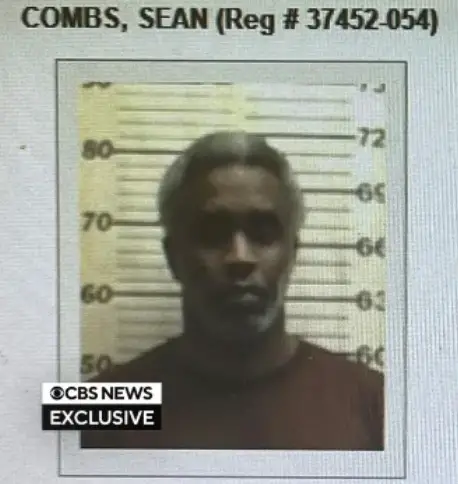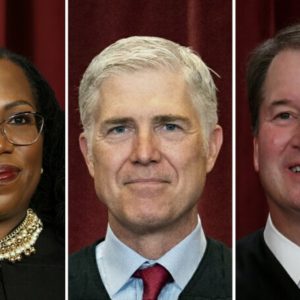Sean “Diddy” Combs, once celebrated for his high-profile career in music, business, and entertainment, has recently become the center of attention for far less glamorous reasons. A newly released photo shows a dramatic departure from the glamorous public persona that fans and media alike have long associated with him. This image, captured at the low-security FCI Fort Dix prison in New Jersey, marks Combs’ first public appearance since his conviction earlier in 2024. The photograph presents a stark and sobering view of the rapper and entrepreneur, highlighting the consequences of his legal troubles and symbolizing a stark transformation from his prior life of celebrity and influence. The sight of Combs in plain prison attire, sporting fully gray hair and a weary expression, underscores the seriousness of the circumstances he now faces and serves as a reminder of how swiftly public image can be altered by legal and personal challenges.
The legal journey leading to Combs’ incarceration began with his arrest on September 16, 2024, when federal authorities charged him with multiple serious offenses, including racketeering conspiracy and trafficking-related crimes. Over the ensuing weeks, a high-profile trial captivated public attention, with Combs facing scrutiny not only for his alleged criminal behavior but also for the impact of these accusations on the people close to him. After an eight-week trial, the jury delivered a verdict that was a mixture of condemnation and partial exoneration: Combs was found guilty of charges connected to prostitution, while he was acquitted of the more severe conspiracy and trafficking counts. This nuanced outcome reflected the complexity of the case, highlighting both the gravity of certain actions attributed to him and the difficulty of proving broader criminal conspiracies. The trial thus became a defining moment, both legally and publicly, signaling the shift from celebrity status to convicted felon.
Testimonies during the trial painted a disturbing picture of Combs’ behavior over the years, providing context for the charges and influencing public perception. Two of his former partners, including singer Cassie Ventura, offered emotional accounts detailing prolonged periods of physical and emotional abuse. Their statements described an environment in which intimidation, manipulation, and coercion were common, adding depth to the understanding of the prosecution’s case. Central to the trial were descriptions of so-called “freak-off” parties, gatherings orchestrated by Combs that allegedly forced participants to engage in degrading and harmful activities. These personal testimonies were pivotal in establishing the patterns of behavior that ultimately contributed to his conviction on prostitution-related charges, illustrating the human impact behind the legal proceedings. The trial thus served as both a courtroom battle and a revealing window into the private conduct of a public figure whose image had long been carefully curated for fame and influence.
Since beginning his sentence, Combs’ day-to-day life has been dramatically altered from the luxurious and high-profile lifestyle he once led. He entered FCI Fort Dix on October 30 to serve a 50-month prison term, a sentence that has imposed both physical and psychological adjustments. Prison records indicate that he has been assigned work in the facility’s laundry, a task emblematic of the starkly different environment and responsibilities he now faces. In addition, Combs has enrolled in a drug rehabilitation program within the prison, an initiative aimed at addressing substance use issues and promoting personal rehabilitation. Completion of this program offers a potential reduction of up to one year from his overall sentence, suggesting a pathway toward mitigating some of the consequences of his conviction. These developments illustrate the stark contrast between Combs’ past and present, as he moves from a life of public visibility and influence to one structured by institutional rules, responsibilities, and rehabilitation programs.
While official statements from Combs’ representatives emphasize his focus on “sobriety, healing, and setting a better example,” reports have emerged suggesting that his adjustment to prison life has not been without challenges. Allegations have surfaced regarding rule violations, including drinking homemade alcohol and participating in a prohibited three-way phone call. Though Combs’ team has denied these reports, such claims contribute to the narrative of a high-profile figure struggling to adapt to a dramatically different environment. The tension between rehabilitation efforts and potential infractions highlights the broader difficulties faced by individuals accustomed to autonomy and privilege when navigating the structured confines of correctional institutions. Moreover, these reports reinforce the media and public’s fascination with the ongoing evolution of Combs’ circumstances, illustrating how celebrity scrutiny continues even in incarceration.
The release of Combs’ new photograph has had a profound impact on public perception, serving as a stark symbol of the dramatic reversal in his circumstances. The image captures him in a moment of vulnerability and transformation: the once glamorous and polished public persona has been replaced by an individual marked by time, responsibility, and the consequences of criminal conviction. His gray hair, plain prison attire, and fatigued expression convey the seriousness of his current reality and act as a visual reminder of how fame and fortune can be eclipsed by legal and personal missteps. The photograph has sparked conversations about accountability, the consequences of abuse and coercion, and the complex dynamics of celebrity culture intersecting with the justice system. It also serves as a broader reflection on the fragility of public image, reminding audiences that even the most iconic figures are subject to societal laws and human vulnerabilities.
Ultimately, the case of Sean “Diddy” Combs represents a multifaceted story of fall from grace, legal accountability, and personal transformation. From his arrest and high-profile trial to his current life in a federal correctional facility, the trajectory underscores the dramatic shift from a life characterized by glamour, wealth, and influence to one constrained by rules, rehabilitation programs, and the realities of incarceration. The combination of court testimonies, legal outcomes, prison assignments, and public scrutiny paints a comprehensive picture of both the human and societal dimensions of his situation. While he now navigates the challenges of serving a sentence and engaging in rehabilitation efforts, the public continues to observe his journey closely, interpreting his actions and image through the lens of accountability and consequence. The new mugshot and surrounding context illustrate not only the tangible consequences of criminal behavior but also the symbolic fall from a life of privilege, offering a powerful commentary on the intersection of fame, justice, and personal responsibility in contemporary society.






